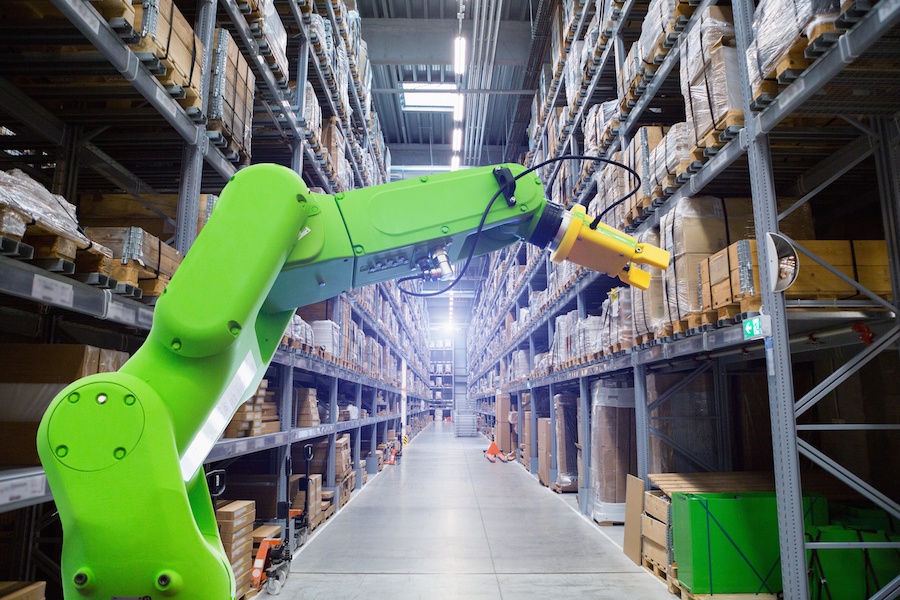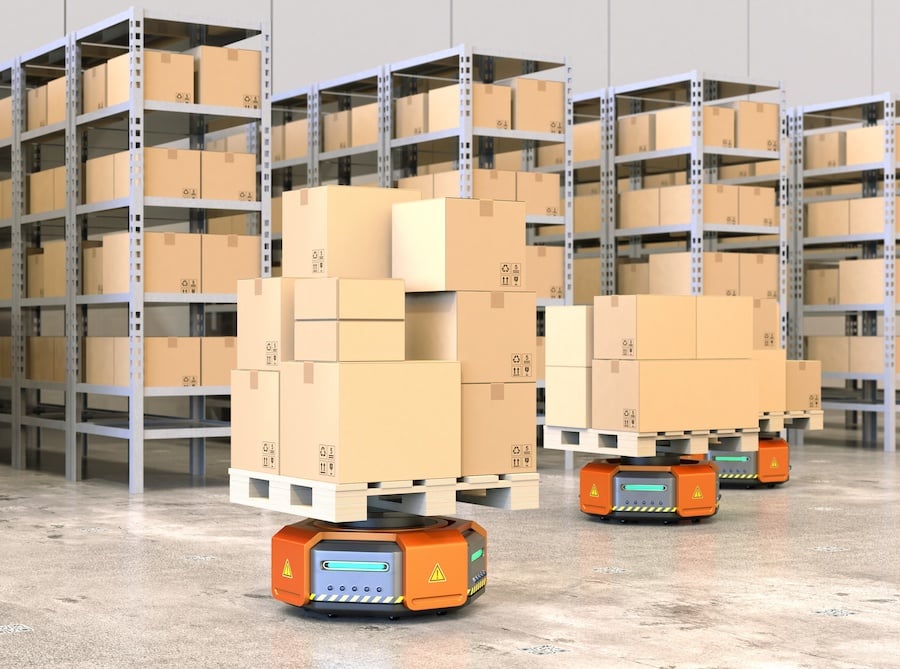
As supply chains have gotten more high-tech, the most important link—the warehouse—has had to put on speed to keep up. Part of that intrinsic process is the introduction of new tech tools and processes to workflows already in place. However, with so many literal and figurative moving parts, adoption seldom feels like a straightforward goal and can be a distinct source of frustration.
How can your warehouse avoid common pitfalls of tech incorporation?
3 Changes to Expect with Warehouse Technology
WMS & WCS
While these systems are in no way new to warehouses, warehouse management systems and warehouse control systems are becoming more structured and optimized. As this technology continues to progress, our data collection and visibility improves, which allows us to gather more information and more predictable results. With this level of optimization and top-down transparency, however, comes the need for continual training for employees and updates to the systems themselves.
How to Prep: Hold training sessions for your managers and your warehouse staff. Make sure that any changes and updates are communicated to your staff. Analyze your data gathered from these system to search for opportunities to continue to educate your staff on the system capabilities.
Mobile Robotics (VGVs / AGVs)
Vision-guided vehicles (VGV) and automated guided vehicles (AGV) are changing the landscape of physically demanding work like case picking. These mobile robots have the ability to solve for the labor shortage and increase productivity. As forklift usage gives way to these tech-smart alternatives, attitudes and awareness need to change as well. You don’t, after all, want to reduce case picking injuries by eliminating lifting but simultaneously increase them with an automated tripping hazard.
How to Prep: Clearly define lanes and right-of-way scenarios for the human employees working alongside robotic counterparts. Educate your employees on how to interact with the robots and explain to them how this technology will affect their duties in the future.
Vision and Voice Picking
Arguably the category with the lowest adoption barrier, vision and voice picking technologies are already becoming familiar additions in up-and-coming warehouse workflows. Much like WMS/WCS, however, a holistic approach must be used to ensure a smooth transition.
How to Prep: Racks, bins, and spaces will likely need to be relabeled, and wi-fi extenders may need to be employed to ensure complete warehouse coverage. Dead wifi spots equate to dead zones for the entire system, so coverage is absolutely crucial. Noise-cancellation or ambient-minimization mics on headsets may also be necessary if ambient noise—fans, coolers, machinery, etc.—is aggressive enough to drown out employee responses.
Determining Your Warehouse Upgrade Readiness

Regardless of what tech you are planning to introduce, you’ll need to cover a few basic housekeeping tasks before launching into that process. Follow these steps to prepare your warehouse for new technology:
Document Existing Workarounds
Any warehouse manager or worker knows a few shortcuts that might not make it into official documentation. Even if they’re only sporadically used, they need to be addressed—a worker attempting to use one of these shortcuts with future incompatible tech can create a huge issue.
Have an “Analog” Plan
With a large human team, if an unexpected influx of shipment arrives, or a recall necessitates pulling a large volume of product out of circulation, individuals can be temporarily reassigned. This is harder to do with tech, which needs to be carefully programmed and typically can’t be reprogrammed “on the fly.” Look at past all-hands-on-deck situations and determine ahead of time what you’ll do if they occur in a high tech, low manpower scenario.
Determine Tech Comfort and Skill
Some of the most efficient warehouse workers may lack basic computer skills. While new tech onboarding might be easy or straightforward to some employees, others may struggle to understand new systems. Some pre-training may be necessary to get everyone up to speed and ready to learn new tech.
Explain How Tech Will Impact—Or Won’t Impact—Employment
It’s completely understandable that warehouse team members might regard tech with a measure of suspicion. AGVs, for example, may make your pick/pack team feel obsolete. Highlight new job opportunities in your organization as robots take offer physically demanding labor, and stay communicative to tamp down nerves.
Look For Integration Opportunities
Contact your partners and ask about the tech or systems they use. Could you potentially strengthen your partnership by investing in the same brand or type? Could you make data more transparent, or introduce more seamless ordering by connecting systems? It’s a potential that’s always worth exploring, particularly when preparing to invest heavily in new warehouse tech.
Upgrade Your Infrastructure
The same cracks or uneven floors that your employees mindlessly step over after years of repetition are system-breaking hazards for the likes of AGVs. Charging docks or stations will be needed for the majority of worker-specific tech components, and, again, wifi connectivity will likely need to be wall-to-wall. The added stress on your facility circuitry for power-hungry devices or speed of your existing internet connection are also factors to consider. While a lot of modern tech takes pains to be “plug and play” friendly, if you’re in an older facility, you might uncover some unpleasant surprises if you fail to research and prep beforehand.
To Sum It Up
Transforming your warehouse with the best tech on the market is a laudable goal, but much like improving on a house, you’ll need to make sure the foundation is in place to support it. Find out if you’re ready to take the leap into modern warehousing efficiency with our New Supply Chain Technology eBook.
